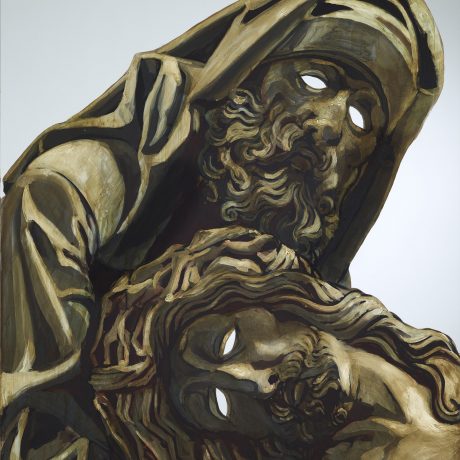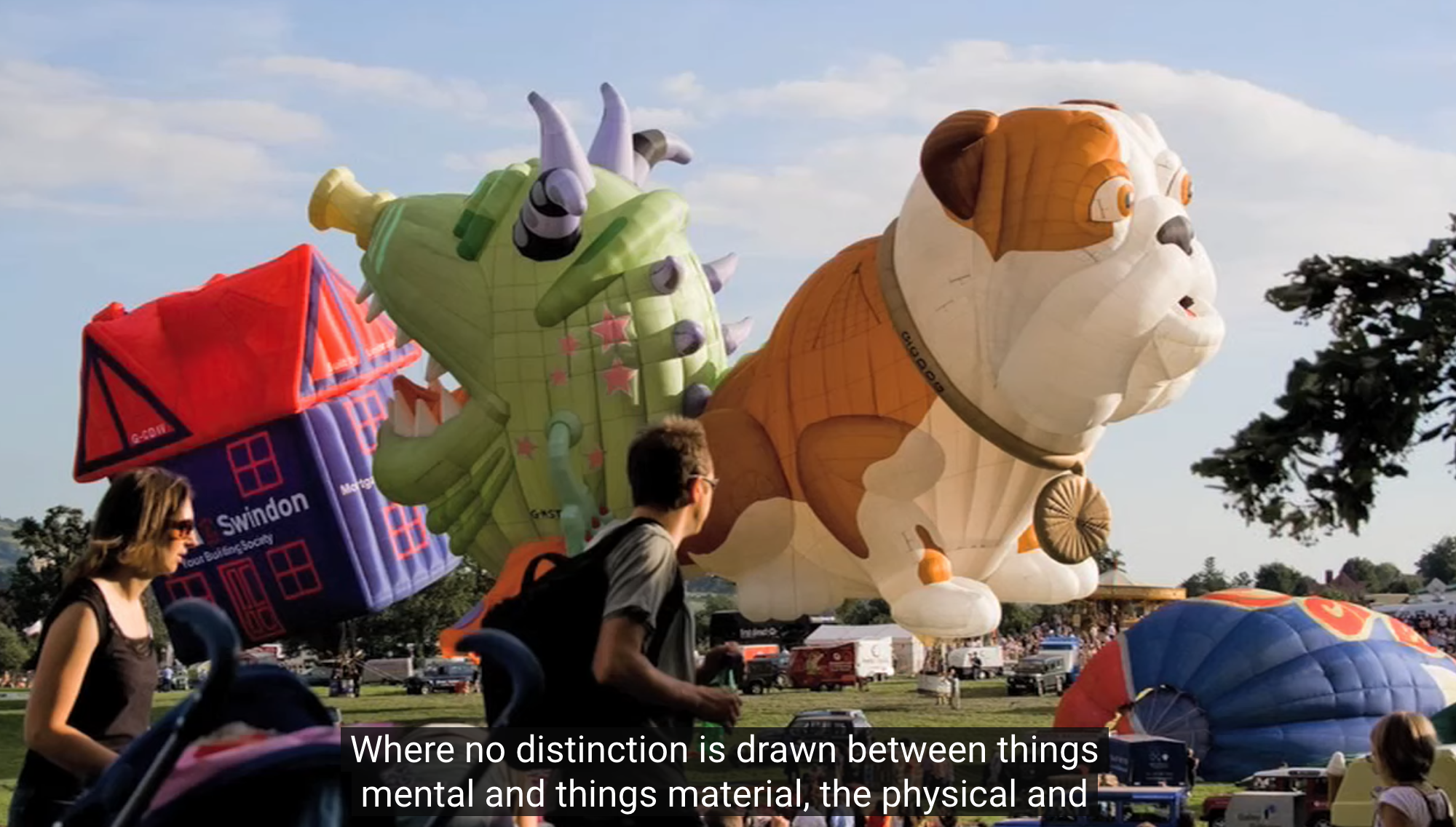
Under the Influence invites artists to discuss a work that has had a profound impact on their practice. In this edition, British multimedia artist Joey Holder discusses the way Mark Leckey’s Prop4aShw (2010-13), a video proposal for a then-unstaged exhibition, revolutionised her idea of what art could be
Mark Leckey’s Prop4aShw presents an interesting concept: make a proposal for an exhibition and record it. It is expansive and embraces the potential for something before it comes to life. The Universal Accessibility of Dumb Things
, the exhibition that eventually came out of this proposal, was incredible as well.
I was studying my MFA at Goldsmiths when I first saw Leckey’s proposal and my idea of what art could be was really blown apart. It accurately reflects the flattened hierarchy of how art appears on the internet alongside constellations of other unrelated stuff. This was in 2010, so people were beginning to think about how technology was affecting the way art was looked at and distributed.
I always struggled at art school as we had to present finished works. For me it was much more about the process and how things flow into one another. I didn’t want to just make a static object. I was thinking about how you can transcend those boundaries. When I saw Mark Leckey’s Prop4aShw it showed me that there could be all this possibility.
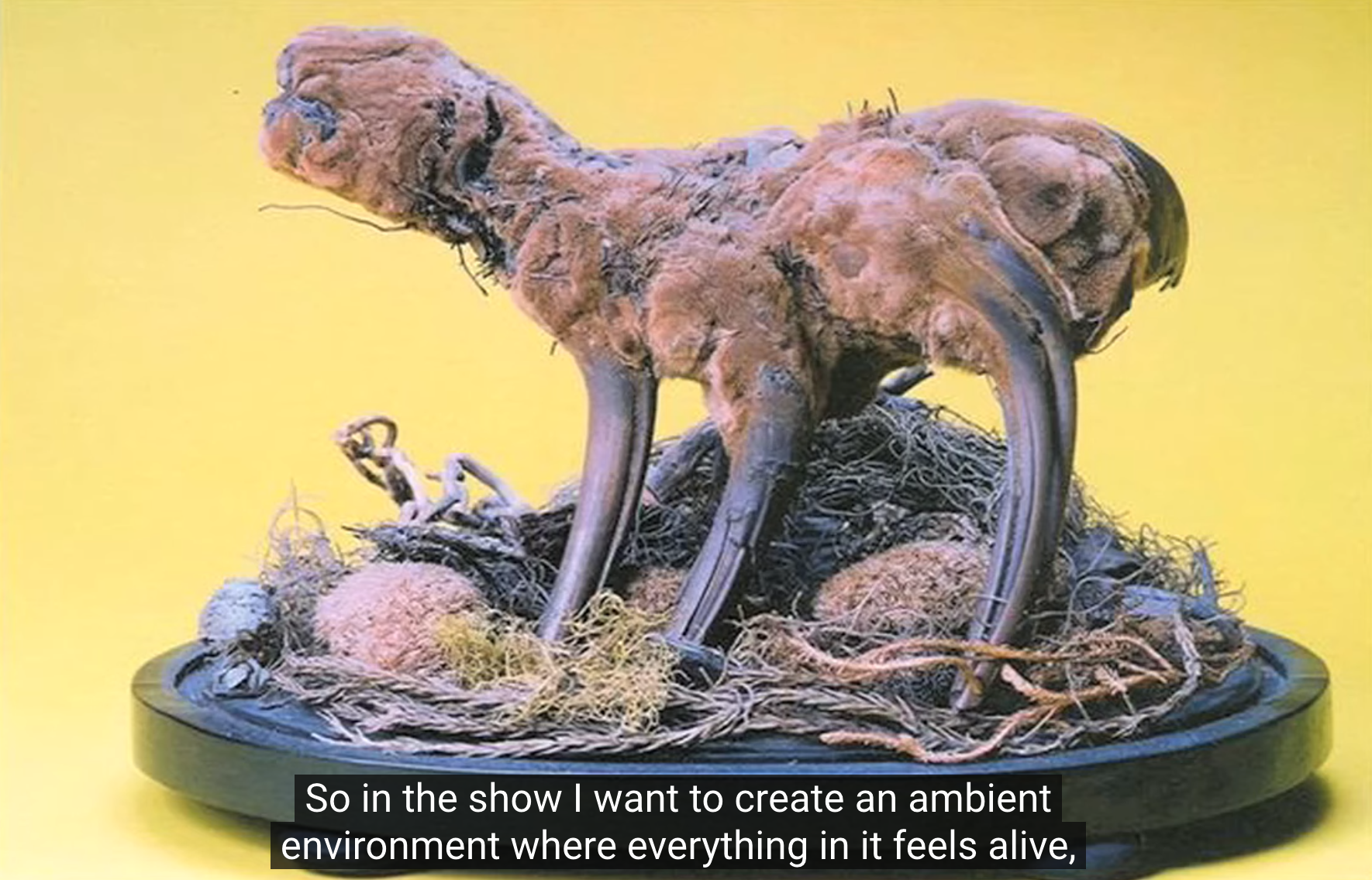
The initial ideas from Mark Leckey’s video go through all of the works I make now. They evolved into a notion of worldbuilding. A lot of the ideas proposed in the video highlight the idea that there is this force or spiritual connection that runs through everything. Like him, I also research technology, computation and how this relates to our psychologies and belief systems. These days it seems as if everything is being turned into data, even life itself. I’m exploring how we might transcend that.
When I look back on it now Prop4aShw still feels really fresh. This work has posters of historical art, pages from The Bible, machines, toys… all these things you might not ordinarily be allowed to exhibit in an art space. It uses sound to communicate between these different realms. It encourages us to think expansively, without limits.
“Mark Leckey’s Prop4aShw showed me that there could be all this possibility”
Mark Leckey makes work about our times, referencing rave culture and contemporary cultural movements and feelings
. I remember him giving a talk when I was at university and he played this film about a talking smart fridge. The idea of this object talking back and becoming sentient was interesting and pretty funny.
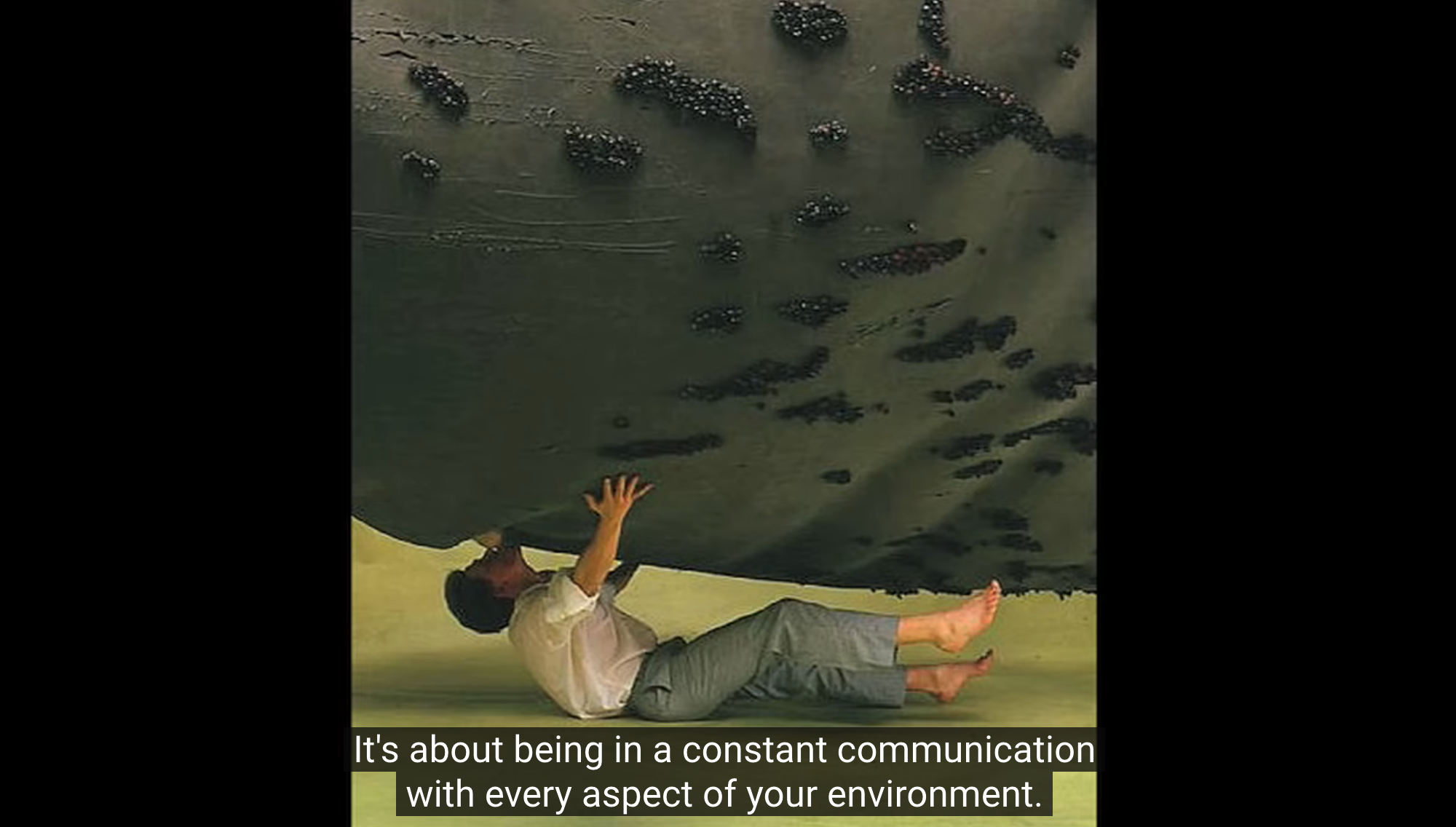
Leckey’s work has had a huge impact regarding the subjects of art and technology. But not just that, in its essence is the talk of a transcendence beyond the recognisable material world, and a reconnection between the physical and the spiritual. It’s what Erik Davis would call ‘Techgnosis’, in his writings in Myth, Magic and Mysticism in the Age of Information.
“There is no point in trying to create something new. Instead the work is about trying to refilter or reconstitute what is already there”
There is still snobbery around the mixing of high and low culture, or the mixing of the fashion and art worlds. We are all part of cultural production but exist in different constructed categories. That loss of hierarchy and flattening of high and low culture is interesting to me.

Leckey’s Prop4aShw illustrates that we exist in a saturated landscape of technology, the internet, Google image searches, and seemingly infinite variations of things and forms. It crystallised for me that there is no point in trying to create something new. Instead the work is about trying to refilter or reconstitute what is already there.
“When I first saw Leckey’s proposal, my idea of what art could be was really blown apart”
I recently installed a work for Selfridges’ SUPERFUTURES exhibition, which relates to the notion of ‘as above, so below’. This is so present in Mark Leckey’s proposal. These different worlds, or what we think of as opposites, are all connected in constant communication with each other: the cosmos and the earthly; the macro and the micro.
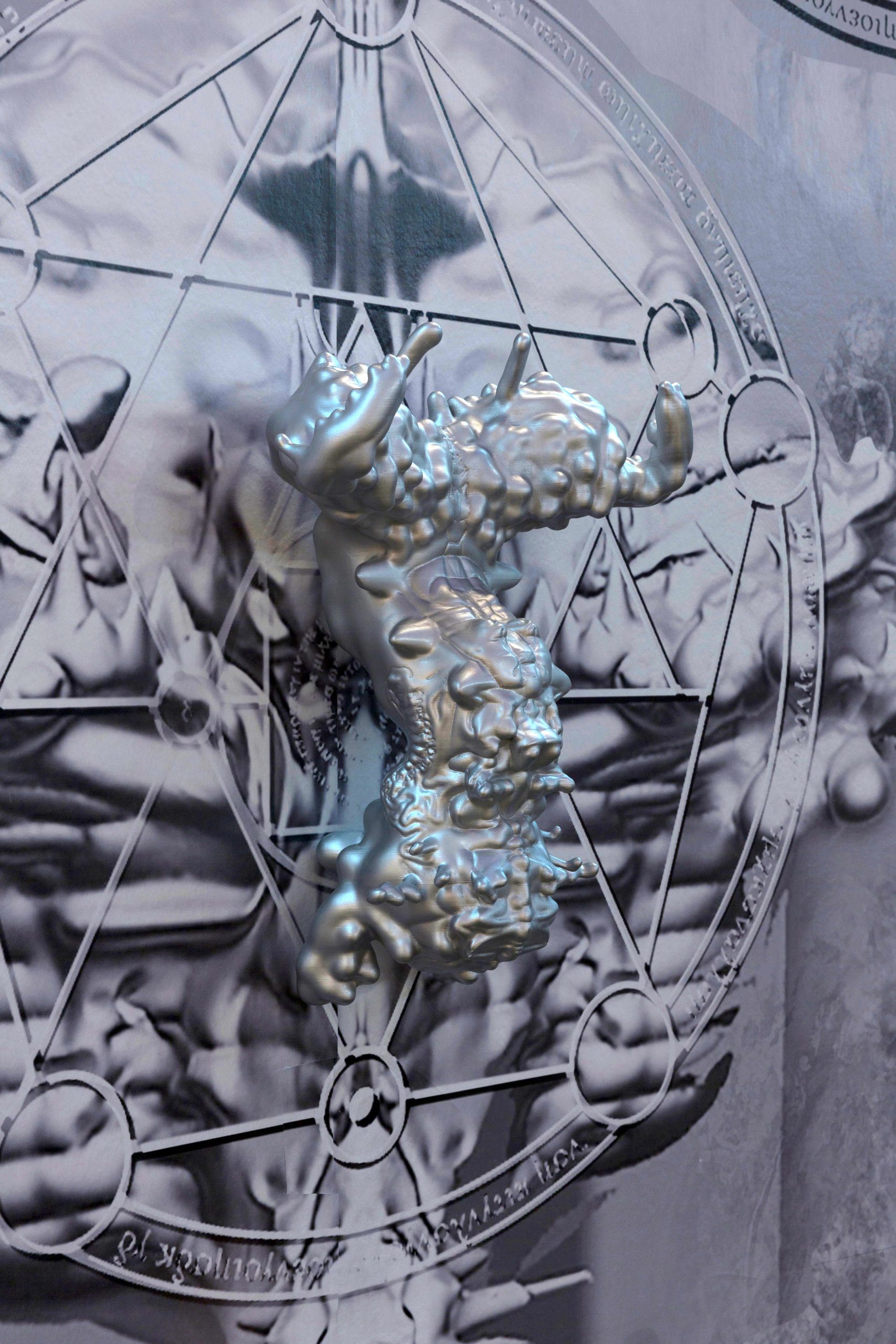
In the show I put microscopic insect parts in place of planetary bodies. The work is called aequator, which means equator in Latin. There are various elements that are meant to represent the sun, or celestial bodies. The work highlights the idea of the cosmos and the natural world being constantly connected. It also encourages people to see alien life as here already on earth. What is already present here is stranger than anything we could imagine.
We need to find a way of moving beyond the idea that there is a separation between us and the world. I think this is the only way we will solve the problems we’re facing with the environment. I have often imagined a synthesised universe, where artificial diversity meets the wider world and nature itself.
As told to Emily Steer, Elephant’s editor
SUPERFUTURES is at Selfridges, London, until 16 October
Under the Influence
Discover the connections between today’s creatives and the artists who helped shape their work
READ MORE